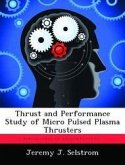An experimental study has been made 'of the energy transfer from a hot (T-5 x 10 K), dense (n -.10 cm ) 6 0 16 -3 deuterium plasma containing a strong magnetic field 4 (8-10 Gauss) brought into sudden contact with a cold wall. The energy flux from the plasma to the wall was measured using a thin film, fast rise-time bolometer. The construction, calibration, and theory of this bolometer are described. The experimentally measured energy flux was compared with a theoretical prediction employing classical plasma transverse thermal conductivity. The measured energy flux is found to be about 1.5 times that predicted by classical plasma theory. The measured plasma ftransverse thermal conductivity exhibits the functional dependence on temperature, magnetic field, and density that is expected from classical plasma theory. The extent of damage to the cold wall surface was also measured using a scanning electron microscope to examine various wall samples exposed to the plasma. The observed surface damage to a copper wall sample was in reasonable agreement with the predicted damage due to sputtering. The damage to the surface of a stainless steel wall sample was considerably greater than predicted by sputtering.








